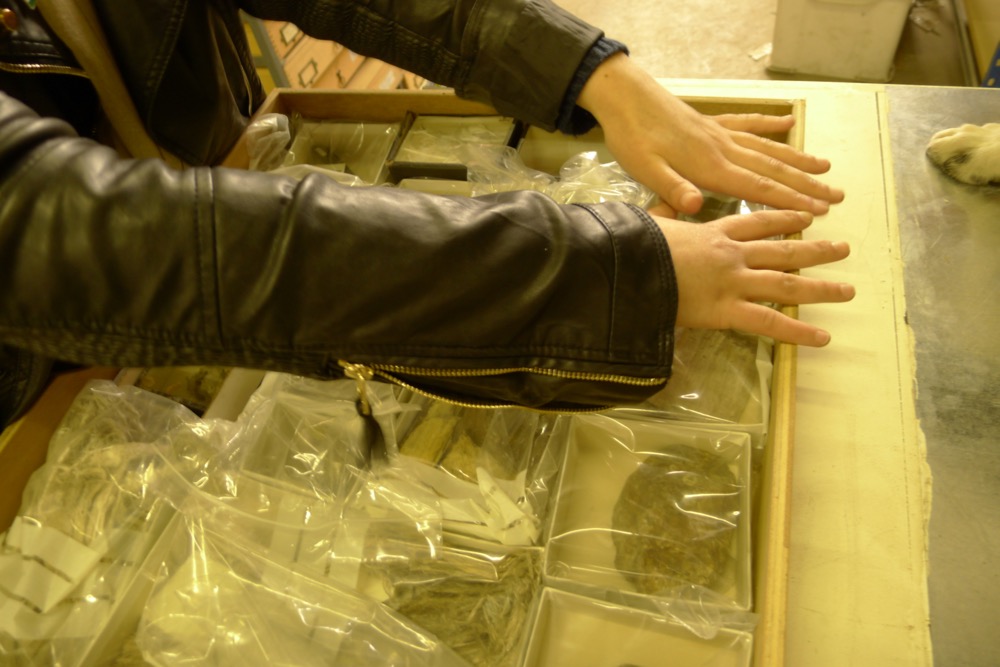Asbestos
Certain objects in museum collections can never be taken out of storage and exhibited. Buried in the mineralogical stores of the Hunterian Museum, Glasgow, is a collection that poses a particular risk – Asbestos. The numerous samples are either in solid rock form or the more interesting and dangerous fibrous types which look like beautiful lush hair or candy floss.
Crocidolite, blue in colour, is the most dangerous form of asbestos. Most Crocidolite mines have now been closed and, as is the case with Western Australia’s Wittenoom, have also been erased from maps and road signs. There was an abc news story a couple of years ago about a love affair between two of the last eight residents: an Austrian who moved there to herd cattle and the lady that ran the gift shop that sold bumper stickers reading ‘I survived Wittenoom’. You can get these sometimes on eBay. The mineralogical curator told me that extended exposure to Asbestos, like radioactivity, can sometimes be better than a shorter exposure, followed by withdrawal.
You can just about handle the Hunterian Museum asbestos samples as they are sealed in plastic bags, but their packaging poses another unexpected risk: mice are very partial to nibbling the bags. Mice will not live long enough to die from asbestosis, but the more the fibrous sample bags are compromised and handled, the more likely they are to shed their fibres and ‘puff up’, meaning potential inhalation by staff.
There are several towns and cities called Asbestos (none in Australia) – towns that are named after or celebrate certain industries or products: Port Sulphur, Louisiana; Sodium, Wyoming; Neon, Colorado; Toyota City, Japan; Bournville, UK; and Woodfibre, British Columbia.
![Former Wittenoom Road Sign. Photo: Five Years at en.wikipedia [CC BY-SA 3.0 (sa/3.0], Wikimedia Commons](https://stamm.com.au/wp-content/uploads/2015/06/2_SW.jpg)

![Port Sulphur. Photo: Dr Warner (Flickr: IMG_4276.JPG) [CC BY 2.0], via Wikimedia Commons](https://stamm.com.au/wp-content/uploads/2015/06/3_SW.jpg)